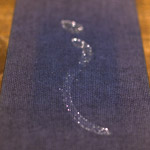
2010.10.28: Hitsumabushi
One of the more appealing things about Japan, for me, is how virtually every town and region has its own specialty foods, something to set them apart from the rest of the country. That's not to say that there aren't any local specialties in America, or that there aren't any big chain restaurants in Japan. Both of those statements would be wildly and equally untrue. Anyone who has had Muscatine melon or St. Louis barbeque (biased examples, I know), or has been to a CoCo Ichiban Curry or a Japanese KFC would agree. But on the whole, there's far more of an emphasis of homogenization in the States. Off the top of my head, I can think of all kinds of foods only found in the region around Okazaki and Nagoya: Hacho miso (including Hacho miso flavored beer, KitKats, and pork cutlets), miso udon, goheimochi (a flat slab of rice cooked on a stick), uirou, fried chicken wings (yes, a local specialty), dote-ni (a kind of beef tripe stew... not my favorite) -- and that's a list made by a foreigner; certainly a native would be familiar with even more.
Today, Taeko-san and Nao-san took me to a restaurant that is focused on a certain local specialty that I had yet to experience. And sometimes, on a dreary, rainy day like today, that's enough to make the whole day special.
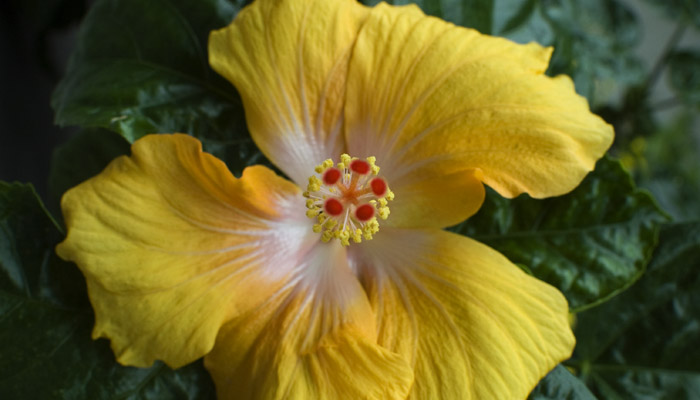
Another flower bloomed today. Isn't it pretty?
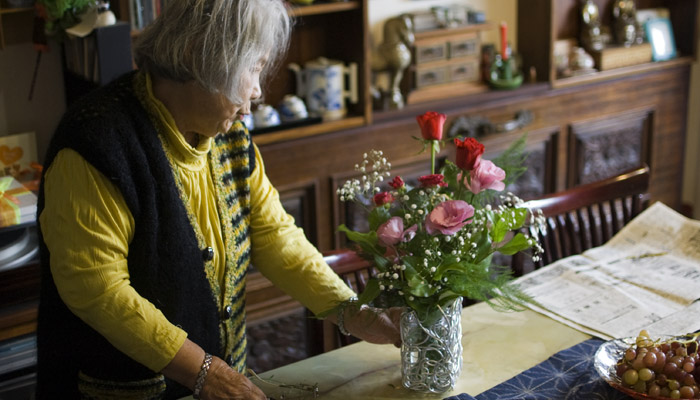
Taeko-san arranging the flowers from yesterday so I could re-re-gift them to my old Japanese language school, the Yamasa Institute. She studied the art of bouquet-arranging as a hobby, and as you can see, is really quite good at it.
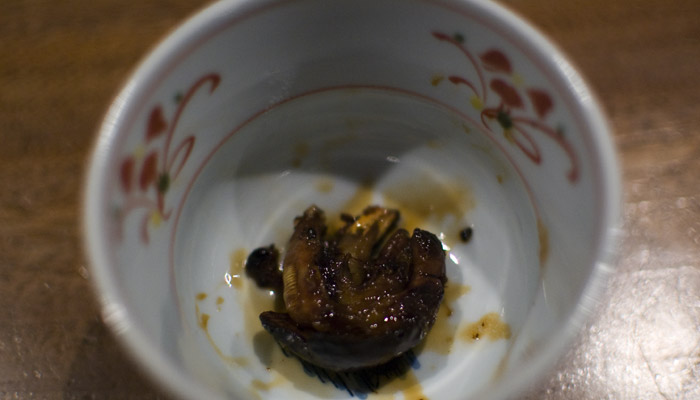
Kimo-yaki. (There were more in the bowl before I took this picture.) A surprisingly tasty dish of... wait for it... barbecued eel livers.
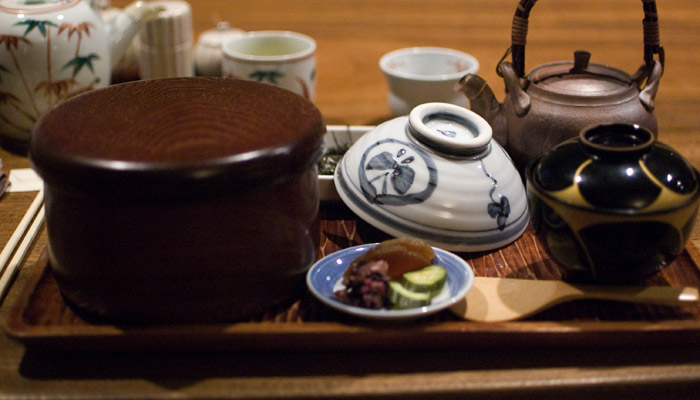
The main course, hitsumabushi. It's an Aichi-ken specialty -- not to be found (not easily, at least) in Tokyo or Osaka.
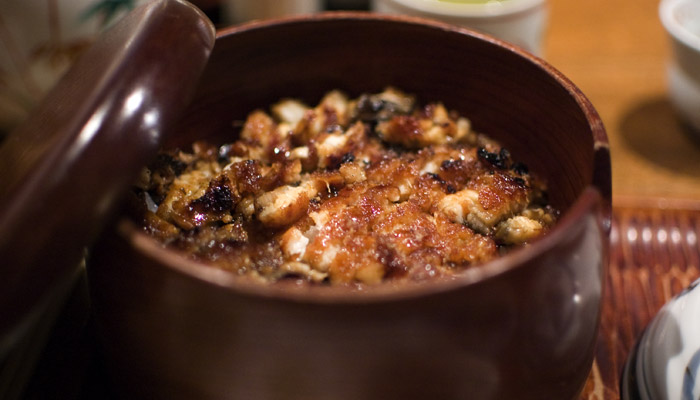
The name comes from the word hitsu or o-hitsu, which is the wooden rice bowl pictured above, and the word mabusu, which means "to sprinkle over." The o-hitsu is filled with white rice sprinkled with barbecued eel in a sweet soy sauce. But what makes the wooden bowl so special that the whole dish is named for it?
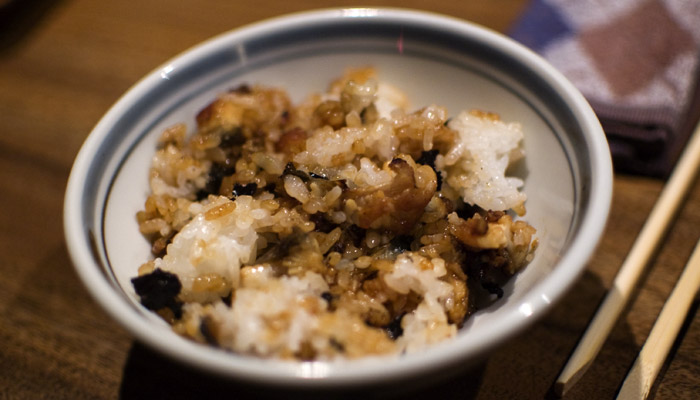
The o-hitsu holds roughly three rice bowl sized servings. And hitsumabushi is designed to make each serving a different experience to be savored along with the anticipation for what the next serving will taste like. The first serving, pictured above, is eaten plain. Simply spoon out a third of the contents of the o-hitsu into your rice bowl, and eat.
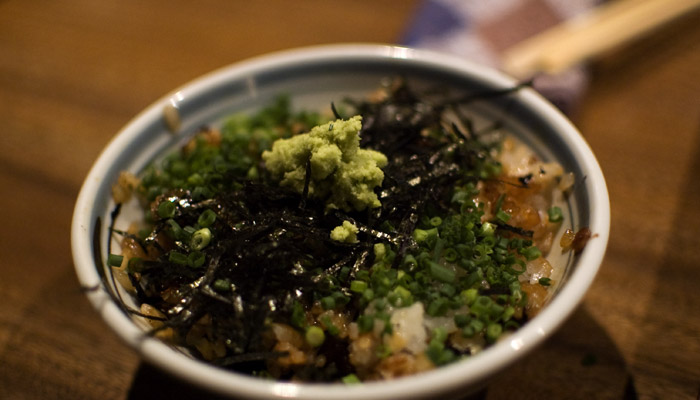
Once you've finished, refill the rice bowl. Then, add a provided mixture of seasonings -- minced leek, wasabi, and dried seaweed. Some choose to save half of the seasonings for the third and final step, but I put it all in.
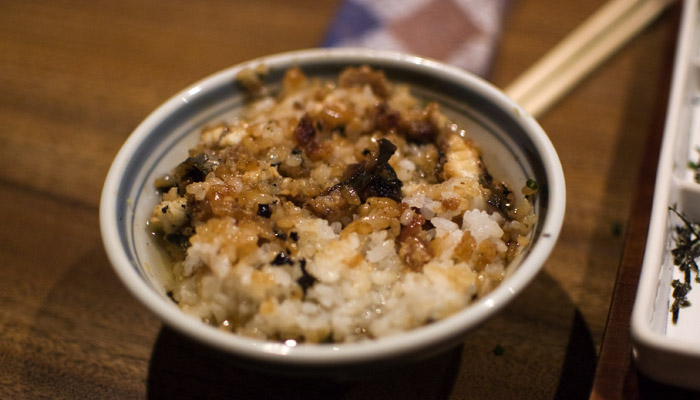
Finally, refill the rice bowl one last time, and pour in soup broth (or sometimes tea) which comes pre-measured in the teapot-looking container. And that's how you eat hitsumabushi. Each of the three eating styles has its own appeal, and mixing up the flavors keeps the dish from getting tiresome.
Tomorrow, there's supposed to be a day of sunshine, a respite before the typhoon hits on the weekend. If so, I'm driving to Nagano for some prime autumn leaf viewing. So for now, I'm off to bed.


